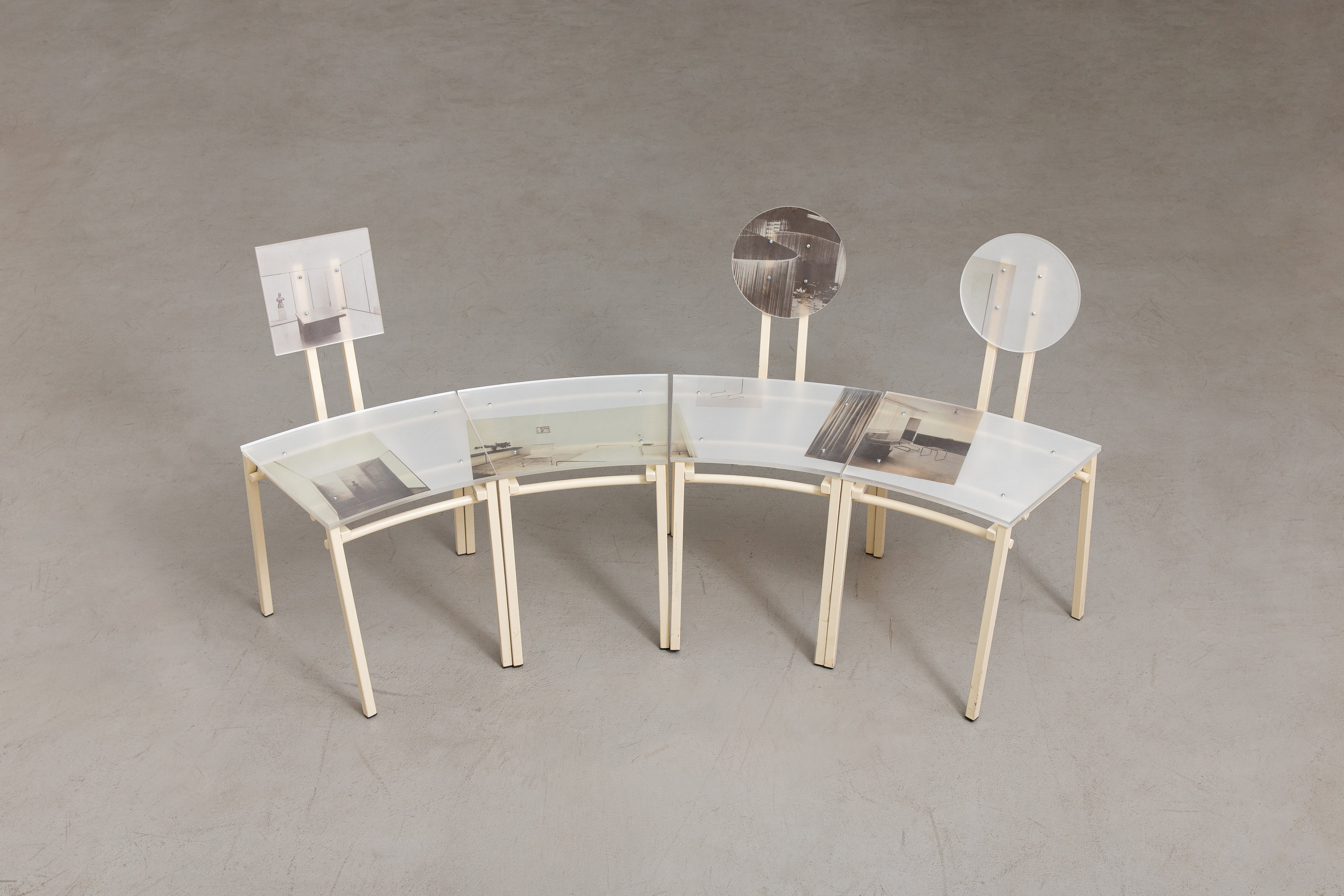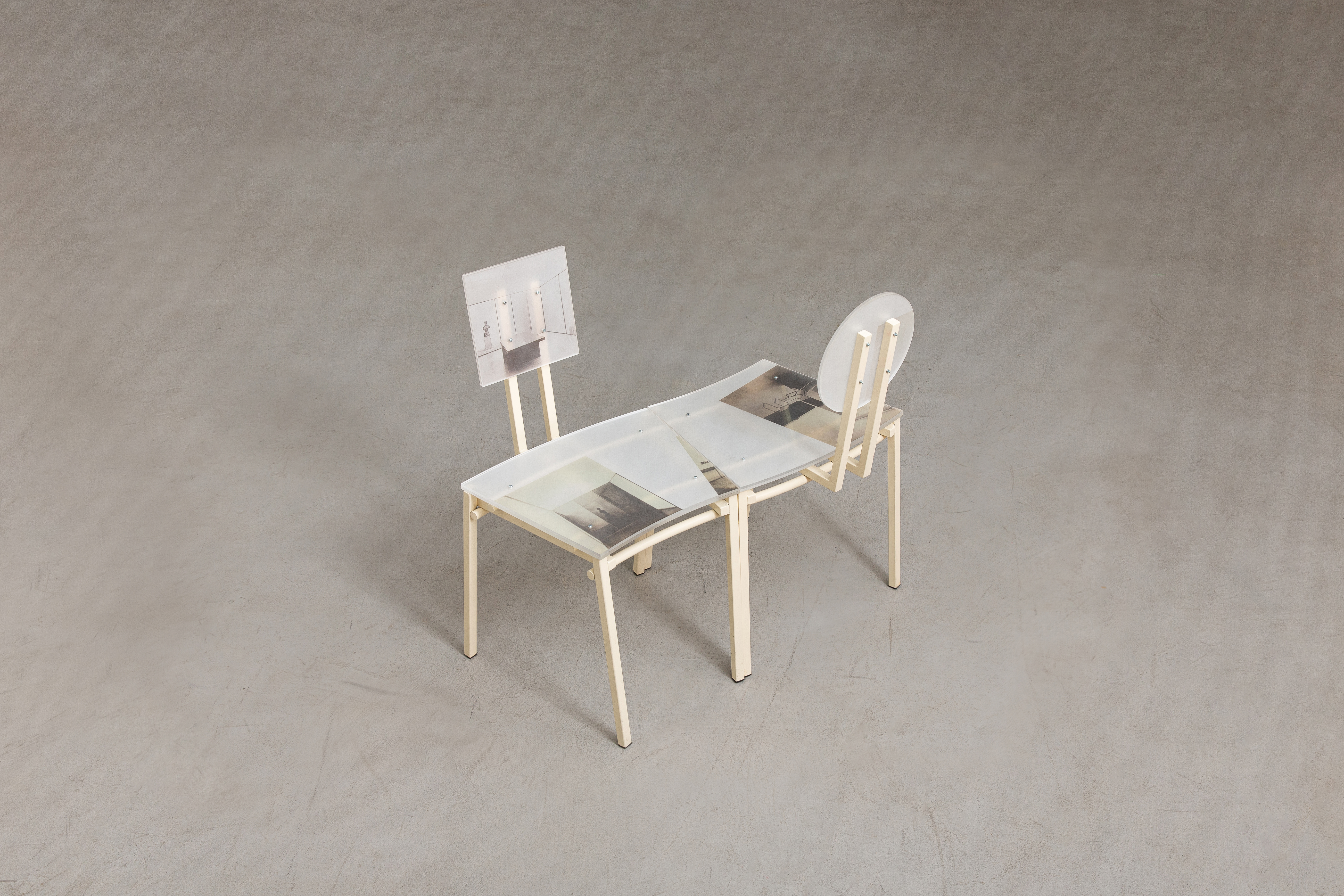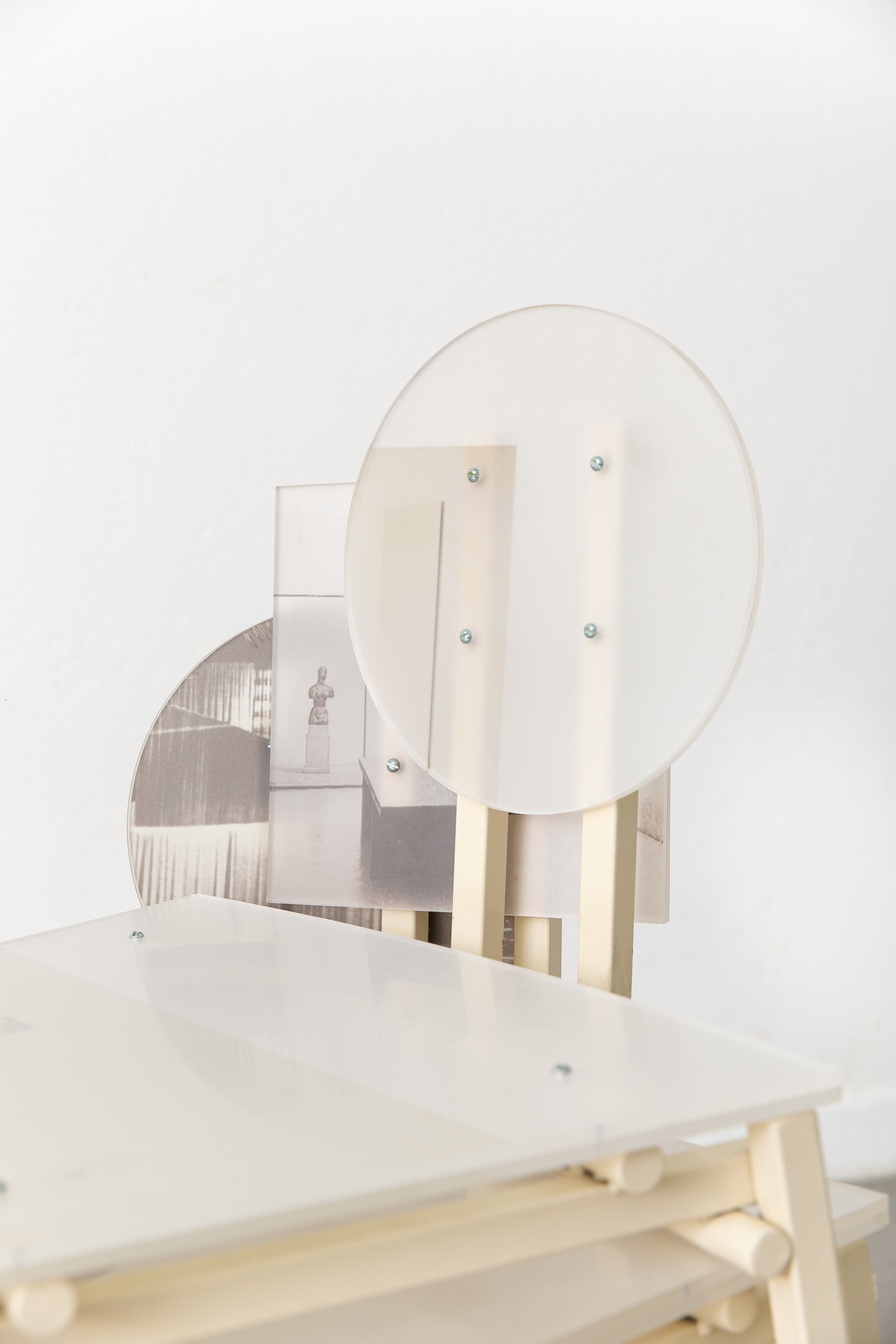Cadeiras para Lilly Reich
Design de mobiliário
2023
acrílico jateado,
papel vegetal,
metal pintado
50 x 50 x 70cm
[pt]
Co:autoria:
Julia Retz
Mariana Meneguetti
Cadeiras para Lilly Reich é a segunda versão de um mobiliário produzido para um espaço de dança, incorporando imagens de obras da designer alemã Lilly Reich em papel vegetal e acrílico translúcido.
Chairs for Lilly Reich
Furniture design
2023
sandblasted acrylic,
tracing paper, painted
metal
50 x 50 x 70cm.
[en]
Co-author:
Julia Retz
Mariana Meneguetti
Chairs for Lilly Reich fosters debate around the archives of the invisible labour of German architect and designer Lilly Reich. In a form of a furniture-archive the work traces back the free-flowing form and fluid shapes frequently used in her designs.
A set of sandblasted acrylic chairs holding some of her archival images are displayed in the space. Possible of use, they suggest different relationships between each other. With a round, square and backless chair back, - a symbolic assimilation to the Bauhaus School geometry, the chairs can be reconfigured as an assembly of living objects. They can be used continuously, connecting one another; in opposition to each other, or fragmented suggesting the separation of the images. It is possible to replace or add images like an expanded archive in process, as the chairs are mobile memories playing with matter, geometry, translucency, in order to trace the invisible powers that sustain our symbolic, poetic and political social system.
Being a collaborator of Mies Van Der Rohe to design his exhibition for the German Building Exhibition “The Dwelling in Our Time” from 1927 where 17 male architects were invited, but being hardly mentioned in the press compared to her partner, Lilly Reich played an important role in stretching the functionalist vocabulary with curved forms in a patriarchal regime.
By using materials such as translucent sandblasted acrylic and tracing paper, common in the design of XX Century architecture projects, the work intends to cross lights these different narratives in order to play on her participation in present times.
Design de mobiliário
2023
acrílico jateado,
papel vegetal,
metal pintado
50 x 50 x 70cm
[pt]
Co:autoria:
Julia Retz
Mariana Meneguetti
Cadeiras para Lilly Reich é a segunda versão de um mobiliário produzido para um espaço de dança, incorporando imagens de obras da designer alemã Lilly Reich em papel vegetal e acrílico translúcido.
Chairs for Lilly Reich
Furniture design
2023
sandblasted acrylic,
tracing paper, painted
metal
50 x 50 x 70cm.
[en]
Co-author:
Julia Retz
Mariana Meneguetti
Chairs for Lilly Reich fosters debate around the archives of the invisible labour of German architect and designer Lilly Reich. In a form of a furniture-archive the work traces back the free-flowing form and fluid shapes frequently used in her designs.
A set of sandblasted acrylic chairs holding some of her archival images are displayed in the space. Possible of use, they suggest different relationships between each other. With a round, square and backless chair back, - a symbolic assimilation to the Bauhaus School geometry, the chairs can be reconfigured as an assembly of living objects. They can be used continuously, connecting one another; in opposition to each other, or fragmented suggesting the separation of the images. It is possible to replace or add images like an expanded archive in process, as the chairs are mobile memories playing with matter, geometry, translucency, in order to trace the invisible powers that sustain our symbolic, poetic and political social system.
Being a collaborator of Mies Van Der Rohe to design his exhibition for the German Building Exhibition “The Dwelling in Our Time” from 1927 where 17 male architects were invited, but being hardly mentioned in the press compared to her partner, Lilly Reich played an important role in stretching the functionalist vocabulary with curved forms in a patriarchal regime.
By using materials such as translucent sandblasted acrylic and tracing paper, common in the design of XX Century architecture projects, the work intends to cross lights these different narratives in order to play on her participation in present times.









